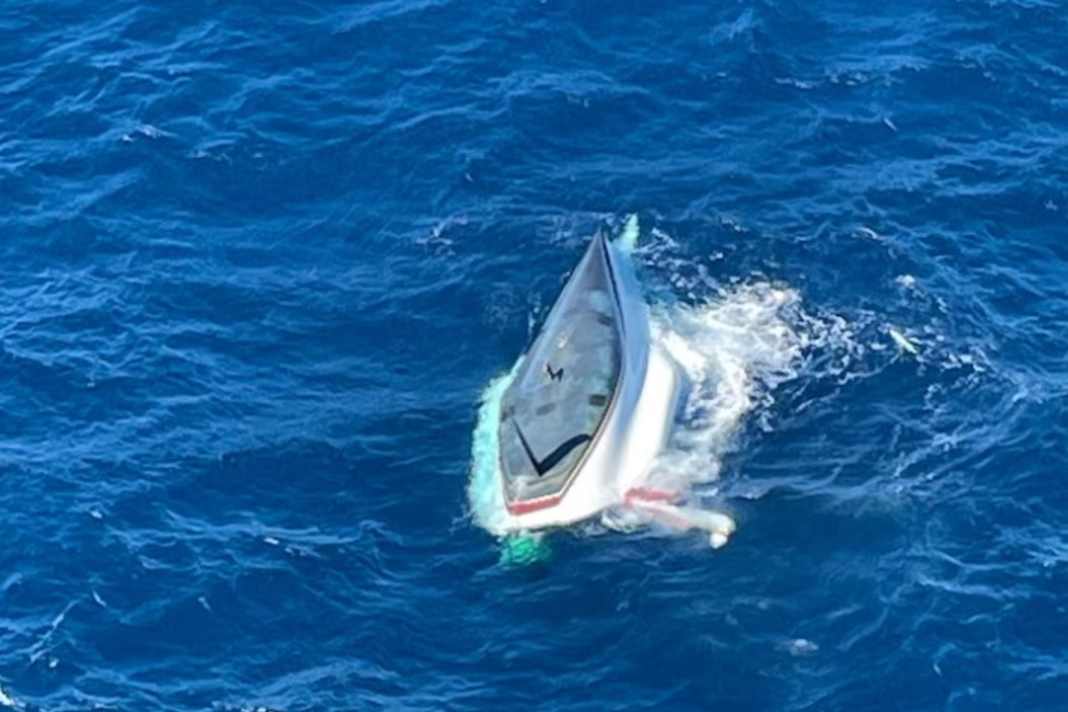


The 65-year-old man was on a cruise off the Australian coast from Yeppoon to Brisbane when an EPIRB was triggered about four nautical miles south of Lady Elliot Island at around 5 a.m. on Sunday morning.
The ship was discovered at around 10.15 a.m. with two men in the water. According to the sea rescuers, the father and his son managed to climb onto the capsized ship and make an emergency call. They were then hoisted into a rescue helicopter using a winch.
Keel breakage was the cause of the accident
The rescuers announced in a press release that the keel of the boat on which the men were sailing had probably broken, causing the boat to capsize. The 62-year-old father and a 27-year-old son were taken to Bundaberg Hospital and are in a stable condition, according to the police.
The body of the 65-year-old man was discovered shortly after 2pm. The police confirmed that all three men were originally from Yeppoon.
It is unclear what type of ship it is. The pictures show wide hull sides and a long bowsprit, so it is obviously not a series-produced cruising boat, but rather a one-off regatta yacht. Queensland Police have not yet identified the yacht, but references on social media and sailing forums point to a Sayer 11 racing yacht called "Runway", a carbon racer-cruiser built for the 2003 Melbourne-Osaka race. The boat allegedly suffered keel damage back in 2007.
At this point, you will find external content that complements the article. You can display and hide it with a click.
Keel losses are rare
Fortunately, keel losses are not frequent, but they are almost always a guarantee of a maritime emergency and it is not uncommon for lives to be lost.
The keel of a sailing yacht is an important component that essentially ensures the righting moment of the ship. It acts as ballast and keeps the ship upright, especially when it is exposed to wind. If a yacht loses its keel, it essentially loses its counterweight, which leads to considerable instability.
Without the keel, the yacht tends to lean heavily or even capsize if the pure hull stability is no longer sufficient, which can quickly be the case, especially in strong winds or rough sea conditions. This can be very dangerous, as the crew almost always has to get into the water. If the keel breaks at the hull, it can also cause the yacht to sink due to the leak.
In such situations, the crew can usually only go to the life raft and hope for outside help.
Series manufacturers take precautions
Due to some spectacular keel breakages in the past, special attention is now paid to the keel-hull connection in series boat construction. It is made stronger than in the past and, as a detail, the counter plates for the hull bolts are rounded and glued in to achieve a secure positive fit without load peaks. YACHT always checks this area very carefully during its tests.
On the subject:
What to do in the event of a suspected keel?
If cracks appear in the laminate, for example due to ground contact, mark them at their ends with a waterproof pencil and observe whether they continue to grow.
In addition, the keel should be relieved as much as possible, for example by means of a small sail area or shrouds. An emergency call should be made if you are unsure of the condition of the boat and even more so if water enters.
